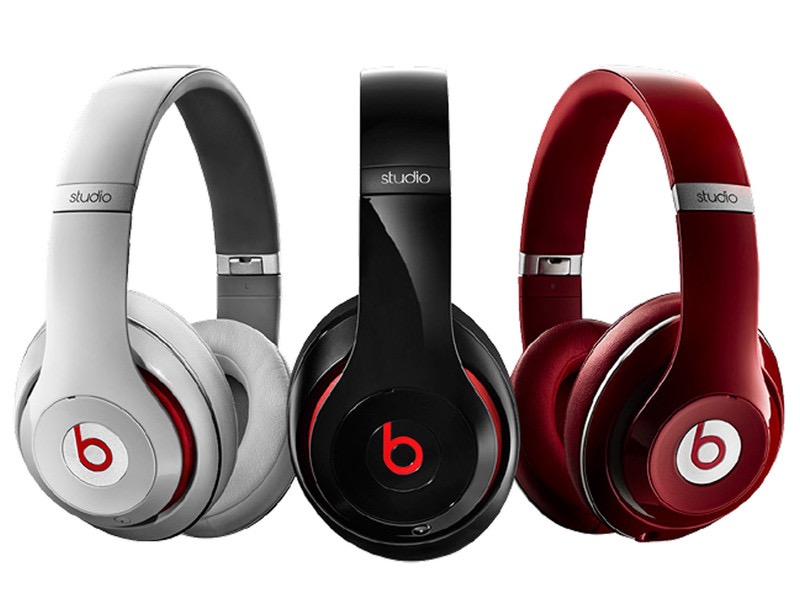 A new pair of headphones really is the perfect gift. There are options to fit any budget and the endless variety will allow you to find something to compliment anyone’s style. The best part: it shows that you truly care. What other gift says, “I support your need to tune me out sometimes, and when those times come, I want you to be happy.”
A new pair of headphones really is the perfect gift. There are options to fit any budget and the endless variety will allow you to find something to compliment anyone’s style. The best part: it shows that you truly care. What other gift says, “I support your need to tune me out sometimes, and when those times come, I want you to be happy.”
You really can’t go wrong gifting headphones, especially if the person you’re buying for is in need of an upgrade from the pair that came with their phone.
How to choose headphones

Deciding on the right pair may seem daunting given the endless options. First, try to determine if they prefer in-ear, on-ear, or over-ear headphones. Once you know that, the next factor to consider is wired, or wireless?
Wired headphones
Wired headphones are icons of the portable music scene. For those of you that are my age, think back to the Sony Walkman and try not to see the yellow-wired headset that accompanied it. For the generation that didn’t need to carry around a backpack for their cassettes, perhaps you’ll recall the early iPod ads with people rocking out with their white headphones and matching cable.

The saying, “the most dangerous phrase in the English language is, ‘we’ve always done it that way’,” has a lot of truth behind it. In this case, there is a good reason headphone manufacturers still produce wired cans: quality of sound. Products by Sennheiser have long been stand-outs in the wired headphone market, and the Sennheiser HD 4.30G is a great choice.
Wired headphones will often sound better than a similar wireless pair. Why? Because the the listener isn’t hearing ultra compressed audio via Bluetooth. The cable transmits the audio with no opportunity for signal loss or dropout. That is why wired still rules the broadcast world, and DJs in your favourite club will only ever be seen with quality wired headphones.
Wireless headphones

Wireless headphones allow you to give the gift of freedom all wrapped up in a bundle of on-trend joy, like Beats by Dr. Dre Solo3. It’s new technology, looks cool, and given the massive variety of products on the market, it’s possible to find wireless headphones that are less of a hit to the budget than high-end wired.
It is undeniable that the convenience of wireless headphones has revolutionized the portable audio market. The pleasure of not being tethered to a device is something everyone deserves to appreciate. Going to the gym, mowing the lawn, doing random chores, all while listening to the game, music, or your favourite podcast has become more accessible with wireless headphones.

How we engage and experience the world around us is evolving. The massive shift towards intuitive, convenient, and easy is not going to stop. My experience has been that wireless headphones inspire me to use them more often than a traditional wired pair because of the convenience. There is no cable to fuss with and I can walk away from my phone or tablet without missing a beat.
Truly wireless buds
A recent advancement in wireless in-ear headphones has been branded “truly wireless.” Traditional wireless in-ear headphones still use a cable to connect the buds, but do not require a cable be connected to your source device. Truly wireless headphones eliminate the cable altogether. A super cool version of truly wireless buds are the Apple AirPods. I would suggest looking for ones that have some additional support to secure them in your ears to ensure they don’t fall out. After all, if they do fall, there isn’t a handy cable to help you find them!

Why the difference in price?
Headphone pricing can be a little overwhelming. You could easily spend anywhere from $20 to $500 on a pair of headphones. It is not always easy to understand what the differences are that create the gap in pricing, even in wired and wireless options, or cross-referencing in-ear vs. on-ear vs. over-ear. Generally speaking, in-ear will cost the least, with over-ear costing the most, and on-ear falling somewhere in the middle.
Noise cancelling vs. noise isolating
There is a difference between these features, and the terms are often used incorrectly, which can create confusion. The principles are straight forward, and it may require some research to determine which of the two features are actually in play in the headphones you are considering.

True noise cancelling headphones use technology to listen to the environment you are in and electronically eliminate those sounds in the headphones. It uses microphones and internal processing to literally cancel the noise around you. A consistent favourite in this category is the Bose QuiteComfort 25.
Noise isolating headphones create a physical seal around your ear, or in the case of ear buds, inside your ear, to minimize the ambient noise. They can be very effective, however that tight seal may be uncomfortable for some listeners. If the person you are buying for wears glasses, for example, over-ear headphones may not be the best solution.
What’s your budget?
You get what you pay for in electronics, and this adage certainly rings true for headphones. If your gift needs to say “I want you to have the best,” be prepared to spend $300-500. In the event the person you are buying for will appreciate good quality sound without all the high-end features, there are a lot of great options in the $150-300 range. Even with a budget under $150, there are options sure to impress.
Give wired or wireless? The big decision
Most of the products on the market today are wireless. There is no longer a massive premium to pay for wireless headphones, so if you have set your budget over $150, go for a wireless pair. If you want to keep the budget under $150, go for a really nice wired pair.
Regardless of what is under the gift wrap, everyone will appreciate the gesture of a new pair of headphones, so take the pressure off. Have fun shopping!
Best Buy has a wide array of headphone options to choose from.



